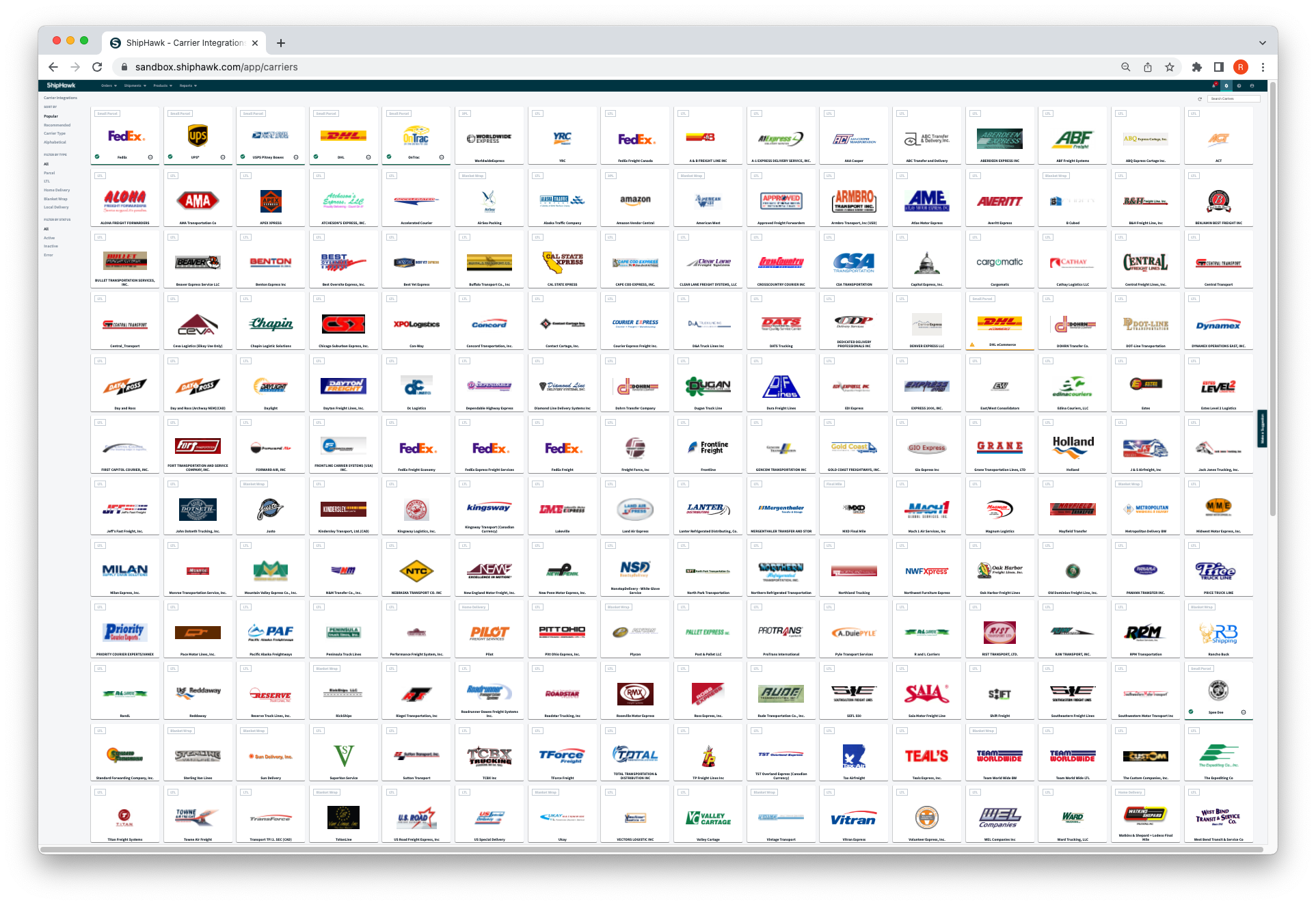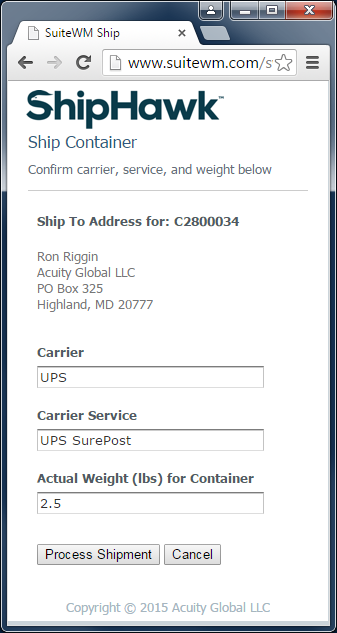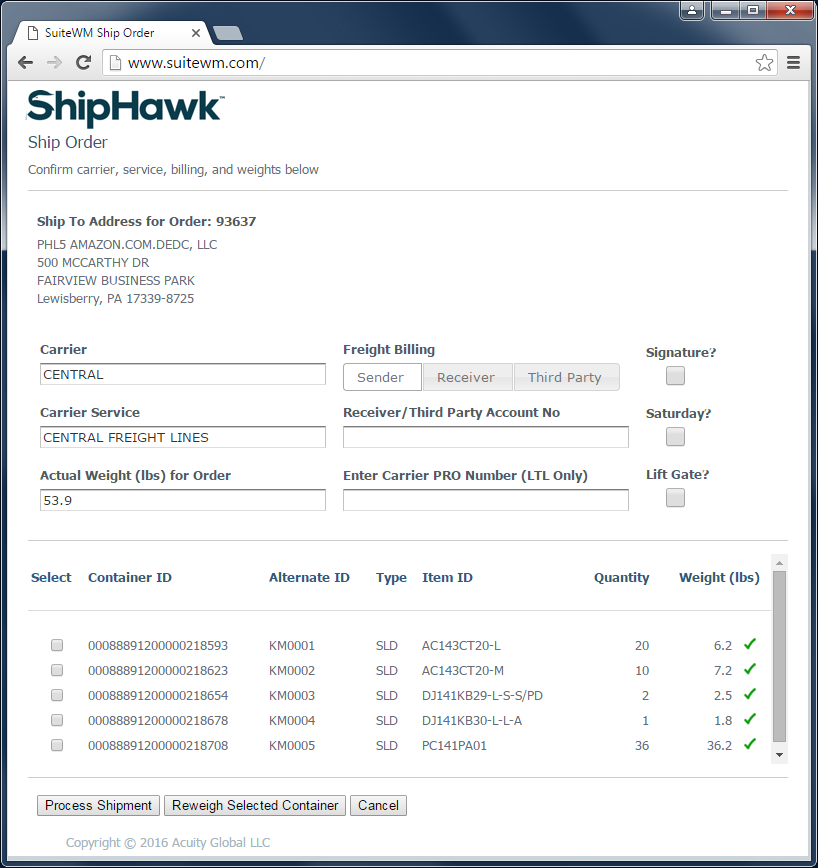Ship¶
The following section describes the shipping process within ShipHawk WMS.
Shipment Options¶
ShipHawk WMS offers advanced shipment processing options which range from fully integrated label and BOL production to highly sophisticated rate shopping for parcel and LTL shipments, transit-time service optimization, freight booking, and branded tracking solutions which all extend well beyond traditional WMS capabilities in any market. ShipHawk is a certified shipping partner with over one hundred carriers and is capable of determining and booking the best rate and service for the most complex shipments.
Operations & Usage¶
ShipHawk WMS shipping is designed to be ultra simple. Scan a container ID barcode created during packing and click “Process Shipment” option, and labels(s) begin to print. Of course, if a change needs to be made relating to shipping service or carrier, this can be easily accomplished on the same page.
The first step in ShipHawk WMS parcel shipping is to place a container on a weight scale (if feasible) and scan or enter a container to be shipped. If the container is part of a multi-container shipment, ShipHawk WMS will highlight this fact and direct the processing accordingly. If the container cannot be placed on a weight scale the operator can always hand-key the weight.
ShipHawk WMS will then, in real time, assess the carrier/service requests provided by the ERP and act upon those requests which may include rate shopping the package/shipment. ShipHawk WMS will present the results of this processing, as shown below. If “all good”, the operator will select “Process Shipment” and label(s) will immediately begin to print. If for some reason a change is required, the operator may edit the data presented and then select “Process Shipment”. At any time, an operator can cancel out of a shipment and review (with authorization) the shipment in more detail with the ShipHawk WMS Administration page, which offers a greater number of editing options, if required.
Of course, more complex shipments can also be managed with ShipHawk WMS. Below is an example of a multi-carton LTL shipment, permitting the entry (or editing) or freight terms, PRO number, account number, accessorials, and more. Manifesting an LTL shipment in ShipHawk WMS will result in production of a VICS BOL as well.
Note
Anyone who’s been in this business for a while knows that printing shipping labels to a thermal printer can be tricky business, especially from a web site. Traditional thermal barcode printers require a “raw” print driver for specialty languages such as ZPL or Zebra Print Language. Combine this with the fact that most modern day operating systems want to encapsulate print requests with headers, effectively disabling the “raw” properties of the printers (printing the ZPL as a document of code rather than “interpreting” it). ShipHawk WMS has solved this problem, using the advanced toolkit/API from PrintNode. PrintNode was specifically developed to solve this problem in the warehouse, and allows ShipHawk WMS to stay “printer and weight scale independent” giving secure access these devices directly without any complex local server/pc operating system configuration.






